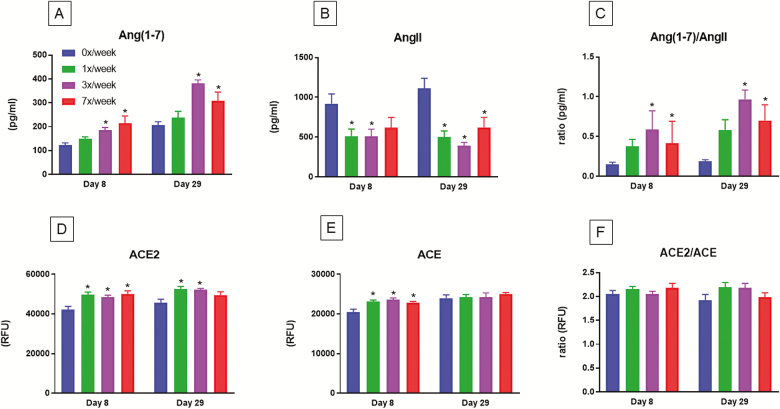Figure 3.
Circulating RAS analytes were measured in 24-month-old male F344BN rats after 8 days (acute) and 29 days (chronic) administration of 2 × 1011 CFU/ kg body weight LP-A in four dosing conditions: 0×, 1×, 3×, or 7×/week. The graphs describe results for (A) Ang(1–7); (B) AngII; (C) Ang(1–7)/Ang(II) ratio; (D) ACE2; (E) ACE; (F) ACE2/ACE ratio. Overall, dosing 3× and 7×/week resulted in significantly higher levels of Ang(1–7), lower levels AngII and a higher ratio of the Ang(1–7)/AngII at both time points. ACE2 levels were significantly higher acutely in the 1×, 3×, and 7×/weeks groups but these effects persisted chronically only in the 3× and 7×/week groups. ACE levels were higher only acutely in the 1×, 3×, and 7×/week groups. There were no differences observed with chronic treatment nor in the ratio of ACE2/ACE at either time point. Data are presented as mean ± SEM. * denotes dosing condition significantly different from the 0×/week condition at their respective time points. ACE2 = angiotensin-converting enzyme-2; Ang(1–7) = angiotensin (1–7); LP = Lactobacillus paracasei; RAS = renin-angiotensin system.

